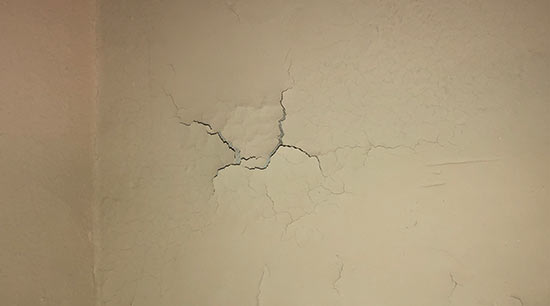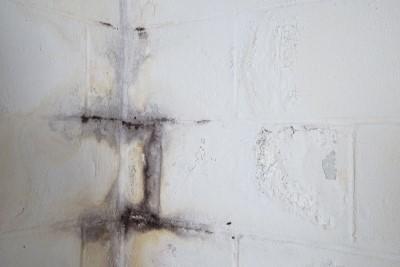Methods to Spot and Fix Water Stains Skillfully
Methods to Spot and Fix Water Stains Skillfully
Blog Article
Each person has got their personal idea when it comes to Indicators of Water Damage Behind Walls.

Water spots on walls are not positive to the eyes. Sometimes it appears nearly unavoidable to experience water stains on walls in houses.
Property owners staying in moist areas regularly manage the anxiety of water stains on wall surfaces. That doesn't have to be the instance for you. With well-rounded as well as accurate info on the causes of water stains and punctual repair work procedures, you will certainly always be an action ahead of such events. This short article promises to be an useful overview for you.
3 Usual Root Causes Of Water Spots on Walls
Unlike popular belief, water stains on wall surfaces do not always originate from poor structure materials. There are numerous root causes of water stains on wall surfaces. These include:
Wet
When warm damp air meets with completely dry cold air, it creates water droplets to base on the walls of structures. This happens in bathrooms and also kitchens when there is vapor from cooking or showers. The water droplets can tarnish the surrounding walls in these parts of your house and also spread to various other areas.
Damp or condensation affects the roofing and also walls of buildings. When the wall surface is wet, it produces a suitable environment for the development of fungis and also microbes.
Poor Drainage
When making a structure strategy, it is crucial to guarantee ample drainage. This will avoid water from leaking right into the wall surfaces. Where the water drainage system is obstructed or missing, underground wetness develops. This web links to extreme dampness that you see on the wall surfaces of your structure.
The leading cause of damp wall surfaces, in this instance, can be an inadequate water drainage system. It can additionally result from inadequate monitoring of sewer pipelines that go through the building.
Pipe Leaks
Many homes have a network of water pipes within the wall surfaces. It constantly boosts the practicality of such pipes, as there is little oxygen within the wall surfaces.
Yet, a drawback to this is that water leak influences the wall surfaces of the building and creates extensive damage. An indication of faulty pipes is the look of a water discolor on the wall surface.
Pro Pointer
A houseplant in your home additionally enhances its humidity. So, if your house is already moist, you might wish to introduce houseplants with marginal transpiration. An instance of suitable houseplants is succulents.
Water Discolorations on Wall: Repair Tips
When dealing with water discolorations, property owners would generally want a fast repair. They would quickly understand this is detrimental as the water discolorations repeat. Below are a few handy suggestions that will certainly guide you in the repair work of water discolorations on walls:
Verdict
Although no one intends to have water stains on walls in their home, it can happen to the most effective people. This post offers you utilize, as you currently recognize just how to manage this mishap if it does occur.
It is constantly best to hire professional services to help fix the damages in your home.
Sometimes it seems almost unavoidable to experience water stains on wall surfaces in residences.
Contrary to prominent belief, water stains on walls do not always stem from inadequate structure products. There are a number of reasons of water spots on walls. The water droplets can stain the bordering wall surfaces in these components of your house and spread to various other areas.
Here are a few helpful tips that will certainly assist you in the repair work of water stains on walls:
CHECKING FOR WATER DAMAGE
Water damage can be costly, and it may begin before you even notice the first signs of trouble. Water damage can cause mold and mildew in your walls and floors, which can create an abundance of health concerns for your family. It can also lead to costly repairs of various appliances and general home fixtures. To avoid the pricey consequences of water damage, here are Warner Service’s top 5 places you should check:
The walls – The easiest place to spot the beginnings of water damage is on the walls and ceilings of your home. If water damage is present, there will most likely be water stains, especially around the windows and doorframes, and/or cracks in the drywall. If a stain looks unusual (discolored to brown, black or gray, raised texture), has a swollen appearance or is soft to the touch, contact a professional immediately. The pipes – To avoid water damage, consistently check the pipes in your kitchen (especially the dishwasher and ice maker), bathrooms, laundry room (specifically washing machines) and basement for corrosion, leaks and water stains. Pay special attention to where the pipes connect in your home and the location of caulking around the bathroom fixtures, including toilets, sinks, showers and tubs. Missing or loose caulking and grout could be signs of leaking water. This seepage can also quickly cause mold and rust, so double check your water heater and tank for wet spots on the floor. The floor – Water damage is very easy to spot on the floor. Look for any warping or buckling of the material, especially in the basement. If your home has wood flooring, look for bright white or dark stains. If your home has carpeting, keep it dry and clean. A damp carpet that smells of mold could cause water damage and health problems. To avoid this, consider installing floor pans under your appliances to help prevent damages from small, slow and undetected leaks. The basement and attic – If your basement or attic smells odd check for mold and mildew around the area, especially the valley where the roof meets. While you are inspecting those areas, check for wall cracks, floor stains, rust and dampness in the insulation. If you live in a colder and/or rainier climate, perform routine checks for water damage from melting snow or ice and rain. The exterior – Check the roof for damaged flashing and missing, cracked or curled shingles. There should also be no standing water anywhere outside your home. This could be caused by puddles, leaky rain gutters or hoses, poor drainage, or short gutter spouts. Invest in a sump pump system or water flow monitoring system, and perform routine maintenance on these outdoor appliances to avoid indoor water damage.

I was brought to that article about from an acquaintance on a different domain. Make sure you set aside a second to promote this blog posting if you liked it. Many thanks for taking the time to read it.
Premium service for plumbing emergencies. Report this page